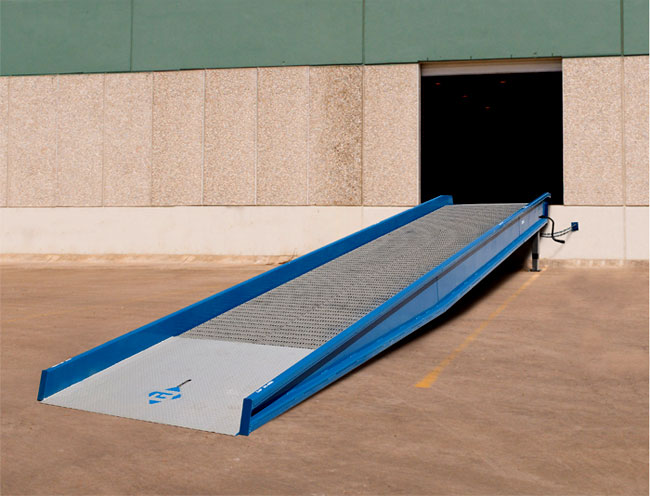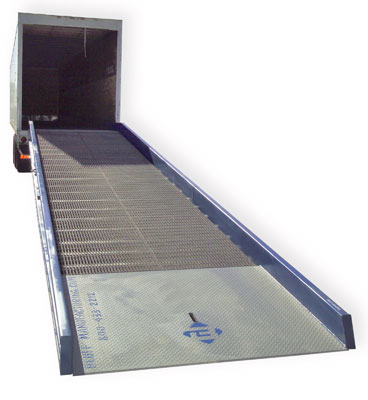Yard Ramps: 4 Critical Specification Factors
High capacity ramps can range from 60,000 to 100,000 pounds capacity, so correct specification is critical

Yard ramps usually perform one of two functions: (1) They allow forklifts or other equipment to load a truck trailer from the ground, or (2) they allow loading and unloading from the ground level to a dock. For many operations, where truck access to dock doors is impossible or impractical, yard ramps create flexibility. Loads can be deposited at the ground level, and left there until they can be dealt with. Loads can be staged outside the dock area and then picked up by truck later, using the yard ramp. Yard ramps are excellent for many loading/unloading issues.
4 considerations when specifying a yard ramp:

- Capacity: It’s critical to calculate the correct capacity of a yard ramp since it will host loaded forklifts with heavy loads. A yard ramp capacity needs to be a working capacity. A quick way to calculate this? The yard ramp capacity should be three times the lifting capacity of the fork lift traveling over it.
- Usage: Using the proper type of yard ramp for your specific application is key. For instance, will you need a yard ramp to go from dock to ground, or from ground to truck? It’s also important to determine the exact height and width you will need depending on your specific application. Use in a truck requires a level off platform to keep the tines at level height and yard ramps must fit inside the door of the trailer.
- Size: Most truck trailer doors are roll ups that have 92″-94″ openings. Swing door trailers usually have 102″ wide openings. Boards and ramps must have a minimum of 2″ clearance per side to allow for safe, secure, proper placement, so it’s important to know if there are going to be any nonstandard trucks or loading that may require your yard ramp.
- Portable or Stationary?: Will you need the yard ramp to be portable or stationary? A portable yard ramp is ideal for ground to truck applications. A stationary yard ramp is commonly used when the yard ramp will not need to be moved as in a dock to ground application.
As always, we can help you specify exactly the right ramp for your application. See Yard Ramps for more details. Thanks to our friends at Bluff Manufacturing for these tips.
Scott Stone is Cisco-Eagle's Vice President of Marketing with 35 years of experience in material handling, warehousing and industrial operations. His work is published in multiple industry journals an websites on a variety of warehousing topics. He writes about automation, warehousing, safety, manufacturing and other areas of concern for industrial operations and those who operate them.



